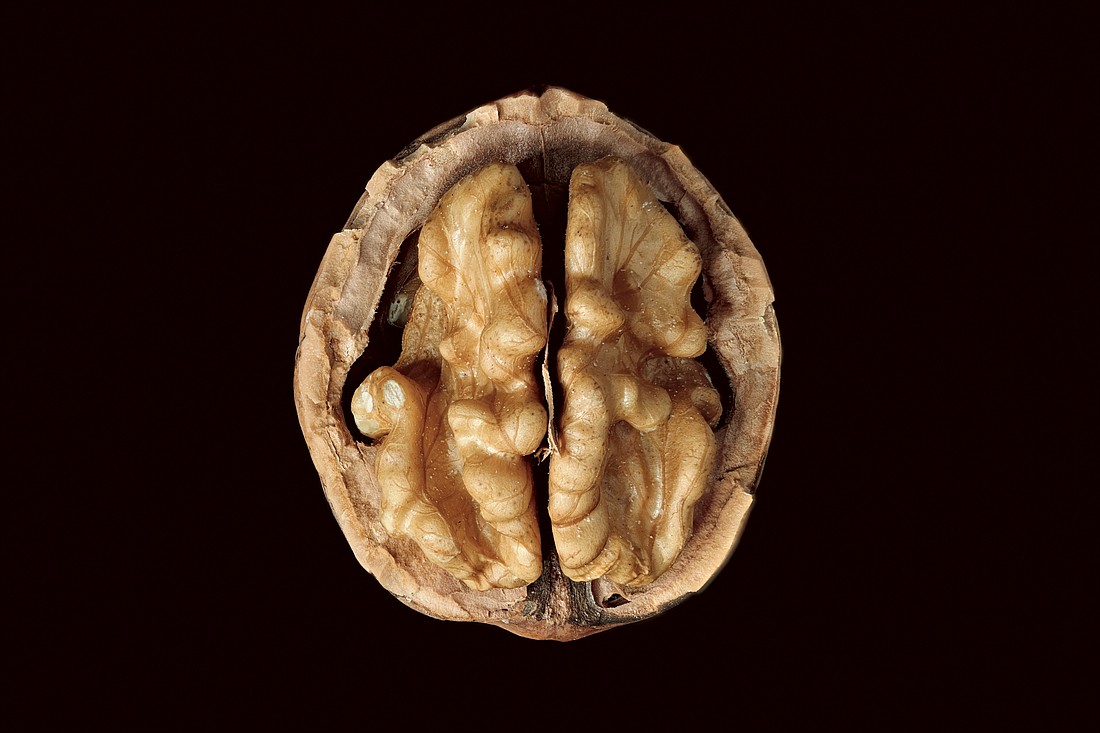- April 19, 2024
-
-
Loading

Loading

Everybody knows a key aspect to a healthy body is a nutritious, well-balanced diet.
It’s no secret certain foods contain nutrients that are beneficial to certain parts of the body. But is there a way to know what body part will benefit from a certain type of food just by looking at it?
For some foods, the answer is: yes.
There are quite a few varieties of foods that look just like body parts they help, and there’s an even larger list of possibilities of how those foods can be prepared.
“(Depending on) the food, you might be able to find one thing that supports the health of that body part (it looks like), but really, the food has many nutrients and can be supportive of health in a variety of ways,” said Lisa Cooper, a registered dietician at Orlando Health’s Center for Health Improvement in Horizon West. “It’s not just one food, but it’s a variety of foods and the nutrient mix you get.”
Chef Gary Appelsies, director of healthy eating at the YMCA of Central Florida, said because families are finding themselves at home more because of the coronavirus pandemic, they can use the time to learn about healthy foods.
“With kids and parents home these days, we can take this as a little learning opportunity,” Appelsies said. “You might even have these (food) items in your pantry or fridge (that resemble a body part they help). Take them out and see if your kids can tell you what body part these represent, and talk to them about the benefits they have for your body.”
WALNUTS: THE BRAIN
Individuals looking to snack on some brain food might want to grab a bag of walnuts on their next grocery run. Once the shell is removed, walnuts resemble the brain, which they also benefit.
“If you look closely at these nuts, you will notice that they look like tiny versions of our brains,” Appelsies said. “They are rich in omega-3 fats and contain high amounts of antioxidants. Eating walnuts may improve brain health and prevent heart disease and cancer. They are great on their own as a snack, added to salads, baked goods or tossed in pasta dishes.”
Cooper added that omega-3 fats can help with memory and also are important for brain development throughout life.
BEANS: DIGESTIVE SYSTEM AND KIDNEYS
Legumes, such as beans, peas, chickpeas, soy beans and lentils, are packed with fiber and nutrients that benefit the digestive system. Cooper said black beans are good for the colon and kidney beans can help promote healthy kidneys.
“Black beans, when they’re still in the pods, they look like the intestines,” Cooper said. “The reason I thought this was a good match is because they’re high in fiber, and fiber, as it gets digested, keeps your colon healthy and promotes colon health altogether. … It provides food for the good bacteria in our colon.
“Kidney beans (are) helpful for kidneys,” Cooper added. “Healthy kidneys filter out waste that the body makes when they’re breaking down proteins. Plant-based proteins, like from legumes and kidney beans, decrease the amount of protein lost in urine, and they lower the acid load on the kidneys. So really, plant-based proteins are less harsh on kidneys and they actually recommend more plant-based protein for people who have kidney disease.”
In addition to benefiting the digestive system, Cooper said nuts and legumes also can benefit the immune system. Some nuts and legumes are shaped like lymph nodes, which play an important part in the immune system. Foods that contain zinc, vitamin C and vitamin A provide nutrients that support a healthy immune system, and nuts and beans are high in zinc.
THE LUNGS: POMEGRANATES
A glass of pomegranate juice could help someone breathe a little easier. The nutrients in pomegranates benefit the lungs, and the seeds inside the fruit even look like the air sacs in lungs call alveoli.
“If you cut a pomegranate in half from top to the bottom and you look at it, it looks like … the lungs with the little alveoli in there,” Cooper said. “Pomegranates (are good for) lung health because the nutrients in pomegranates are protective against lung cancer. They’re high in fiber, vitamin C, vitamin K, potassium, folate, copper and resveratrol, so it’s a mix of nutrients.”
THE HEART: TOMATOES
Although many think tomatoes are vegetables, they’re actually a fruit. Rich in antioxidants, tomatoes can help promote a healthy heart, Cooper said.
“If you cut a tomato in half, it kind of looks like the chambers of the heart,” Cooper said. “Tomatoes are high in vitamin C and lycopene, which are strong antioxidants that help with inflammation and can actually help with lowering blood pressure.”
THE EYES: CARROTS AND SWEET POTATOES
It’s commonly known that eating carrots can be good for one’s eyes. They’re high in vitamins and nutrients that can help improve eye function. Carrots aren’t the only vegetables that are good for the eyes; sweet potatoes are beneficia,l as well. If both vegetables are cut a certain way, they can even look like an eye.
“If you slice a carrot into round circles, you will notice that it resembles an eye,” Appelsies said. “Carrots are most notably known for helping you see better. Science shows that the Vitamin A in carrots may improve eye function. They are also good sources of beta-carotene, fiber, vitamin K, potassium and antioxidants.”